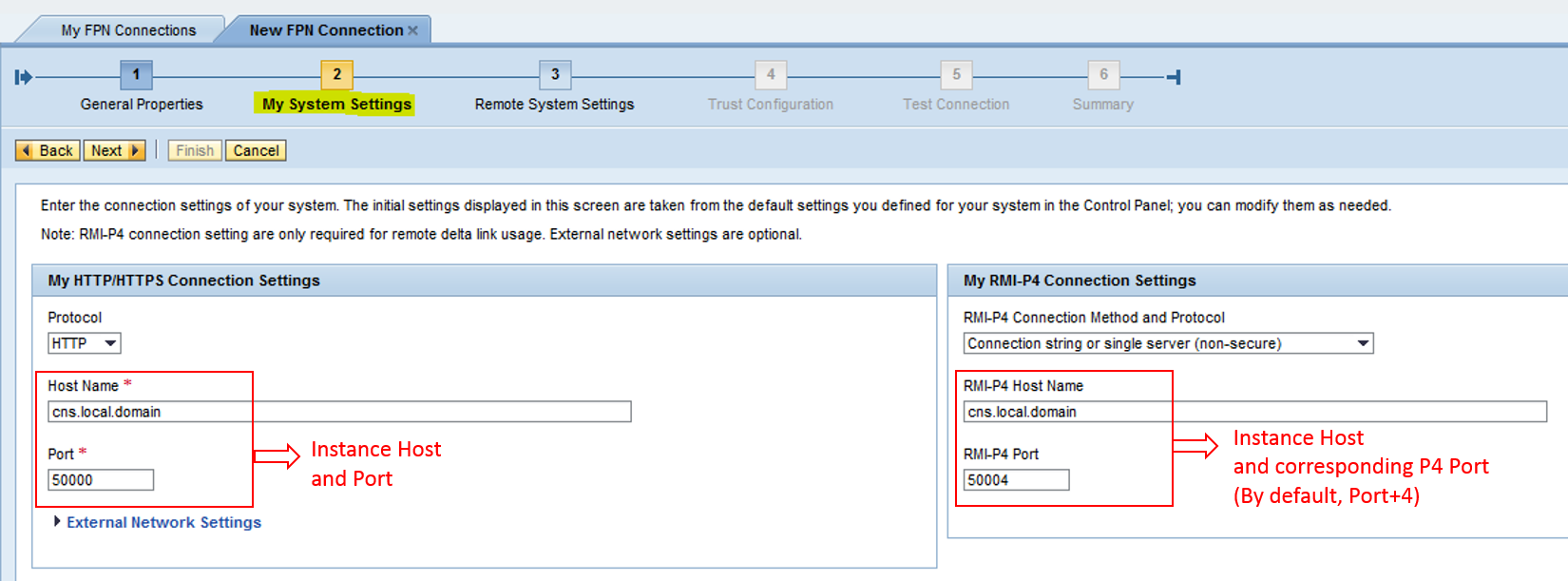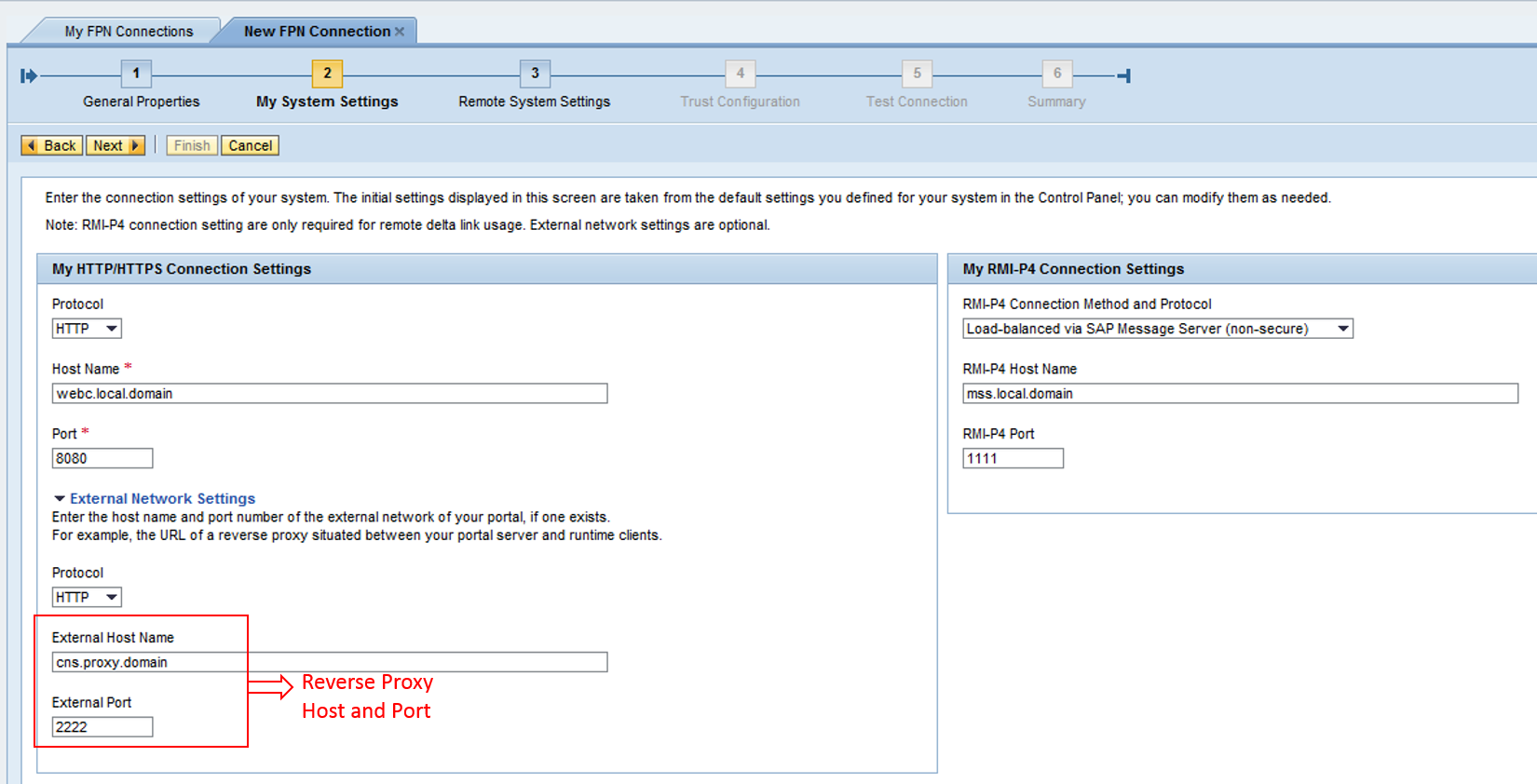
- SAP Community
- Products and Technology
- Technology
- Technology Blogs by SAP
- How to Configure an FPN Connection
- Subscribe to RSS Feed
- Mark as New
- Mark as Read
- Bookmark
- Subscribe
- Printer Friendly Page
- Report Inappropriate Content
In this blog, I will describe the way to configure FPN connection, considering the different possible landscapes.
Starting from SAP NetWeaver 7.3, you need to create an FPN connection in order to facilitate the sharing of portal content between two or more portals that reside in a federated portal network (FPN).
An FPN connection pairs one portal with another. The portals in an FPN connection can share content in one direction or both (in the event that both portals are 7.3 and higher). Since you can share content between two portals in both directions, a portal in an FPN connection can be both a producer and a consumer, at the same time.
You use the FPN Connection wizard to configure trust (one way or two way), to create connections and to carry out registration.
Be aware that there are different ways for implementing content consumption between portals. So, before you start creating and configuring FPN connections, review the CONTENT SHARING WITH SAP NETWEAVER PORTAL document and chose the recommended option considering your use case.
Basic Internal Network
When you have just a basic internal network, use the consumer and producer internal network information. That means the direct host and port of the instance, with a fully qualified domain.



When using secure protocol:
- From the "Protocol" dropdown list, select "HTTPS".
- From the "RMI-P4 Connection Method and Protocol" dropdown list, select the corresponding "secure" string (e.g. "Connection string or single server (secure)").
- Choose the corresponding ports. By default: HTTPS: port + 1 (e.g. 50201); P4: port + 6 (e.g. 50206). Check the System Information for the correct ports.
Cluster Internal Network
In a cluster environment, where you have a load balancer or a web dispatcher in front of the consumer / producer system, you can use the load balancer or web dispatcher information for the settings.

If you want to load balance p4 communication, you can only do this by using the message server information. Check the System Information for the message server host and port.



External Network – Reverse Proxy
In an external network, where you a have reverse proxy, you also need to configure the "External Network Settings" using the reverse proxy information.


Why do you need to do this?
Because the domains of the external and internal networks can be different. In those cases, trying to use the internal host and port of the consumer will create a cookie with the internal domain (e.g. local.domain) but redirect links will be with the external domain (e.g. proxy.domain) and therefore the access to the producer will fail. Once you have configured external network settings, end users can only access FPN content at runtime if they use the external network host and port. If they use the internal host and port to access the consumer, the FPN content will not be available.
If you choose to use FPN functionality you might find the following SAP Notes helpful:
- SAP Managed Tags:
- SAP Enterprise Portal
You must be a registered user to add a comment. If you've already registered, sign in. Otherwise, register and sign in.
-
ABAP CDS Views - CDC (Change Data Capture)
2 -
AI
1 -
Analyze Workload Data
1 -
BTP
1 -
Business and IT Integration
2 -
Business application stu
1 -
Business Technology Platform
1 -
Business Trends
1,658 -
Business Trends
105 -
CAP
1 -
cf
1 -
Cloud Foundry
1 -
Confluent
1 -
Customer COE Basics and Fundamentals
1 -
Customer COE Latest and Greatest
3 -
Customer Data Browser app
1 -
Data Analysis Tool
1 -
data migration
1 -
data transfer
1 -
Datasphere
2 -
Event Information
1,400 -
Event Information
70 -
Expert
1 -
Expert Insights
177 -
Expert Insights
338 -
General
1 -
Google cloud
1 -
Google Next'24
1 -
GraphQL
1 -
Kafka
1 -
Life at SAP
780 -
Life at SAP
14 -
Migrate your Data App
1 -
MTA
1 -
Network Performance Analysis
1 -
NodeJS
1 -
PDF
1 -
POC
1 -
Product Updates
4,575 -
Product Updates
380 -
Replication Flow
1 -
REST API
1 -
RisewithSAP
1 -
SAP BTP
1 -
SAP BTP Cloud Foundry
1 -
SAP Cloud ALM
1 -
SAP Cloud Application Programming Model
1 -
SAP Datasphere
2 -
SAP S4HANA Cloud
1 -
SAP S4HANA Migration Cockpit
1 -
Technology Updates
6,872 -
Technology Updates
470 -
Workload Fluctuations
1
- Be a Cockroach: A Simple Guide to AI and SAP Full-Stack Development - Part I in Technology Blogs by Members
- SAP02 SE16 tabel USR02 laatste gebruik accounts in Technology Q&A
- SAP CPI to Partner connection via VPN connection in Technology Q&A
- What’s New in SAP Datasphere Version 2024.10 — May 7, 2024 in Technology Blogs by Members
- SAP Integration Suite - Design Guidelines in the integration flow editor of SAP Cloud Integration in Technology Blogs by SAP
| User | Count |
|---|---|
| 17 | |
| 11 | |
| 7 | |
| 7 | |
| 7 | |
| 7 | |
| 6 | |
| 6 | |
| 6 | |
| 5 |